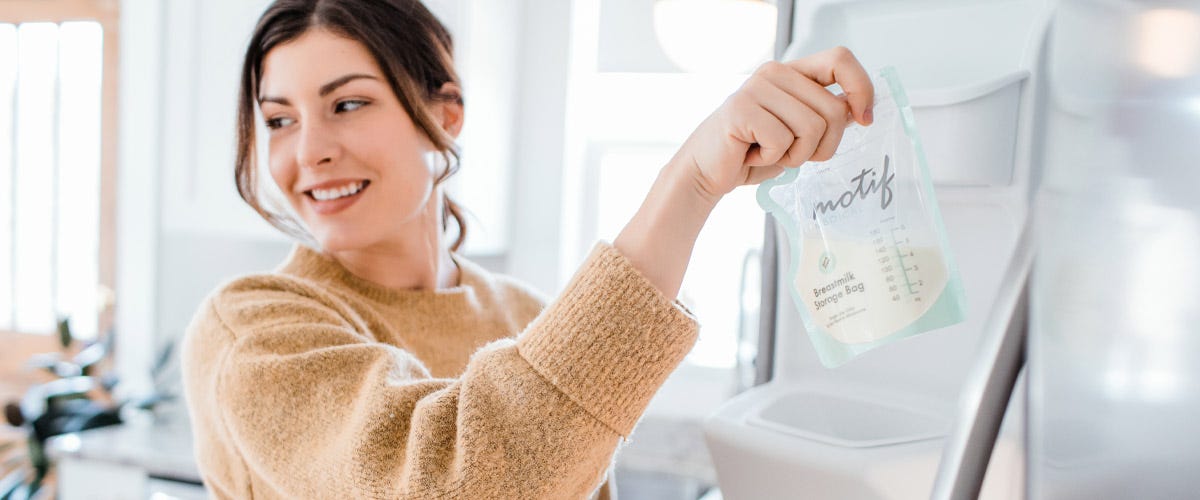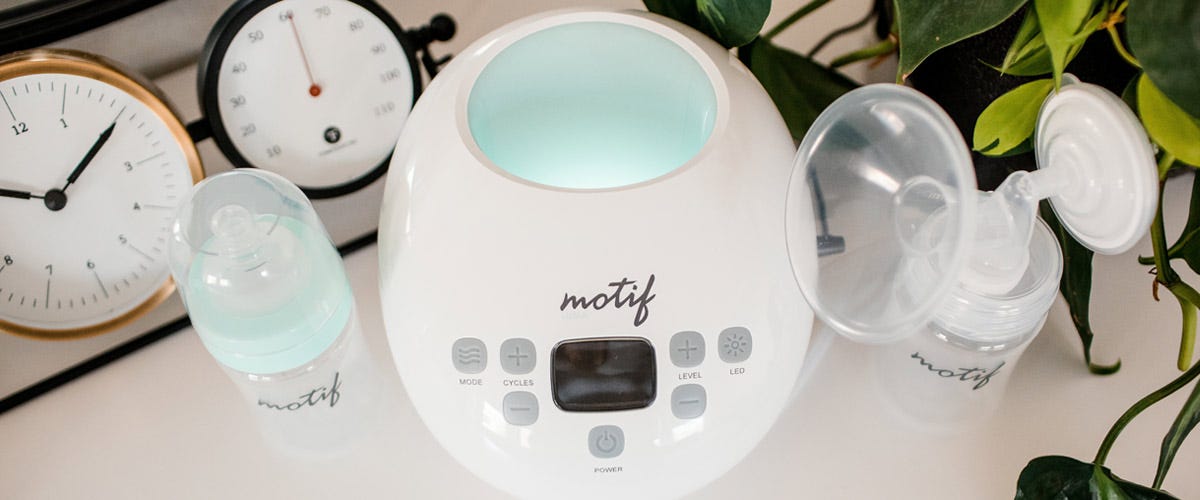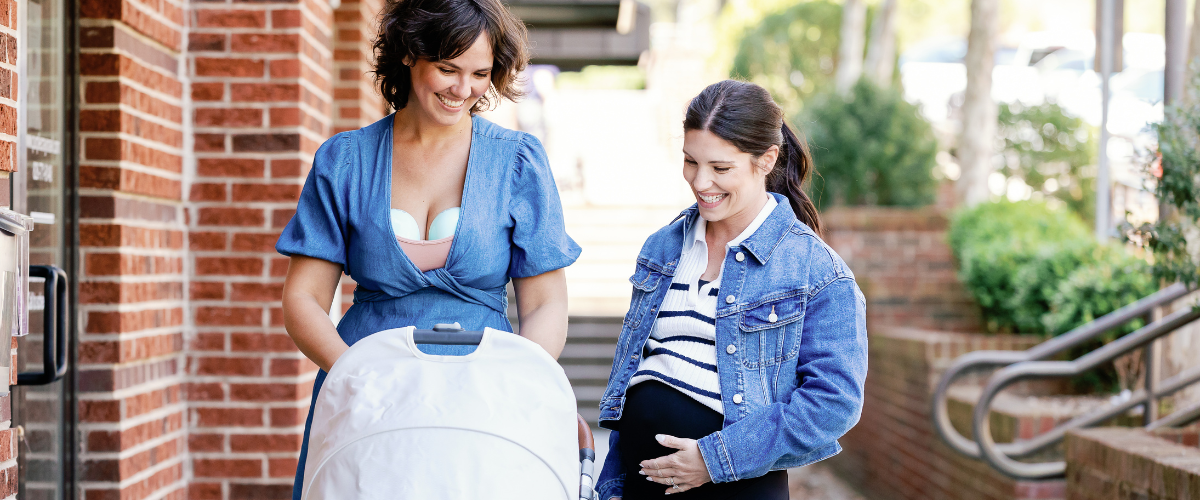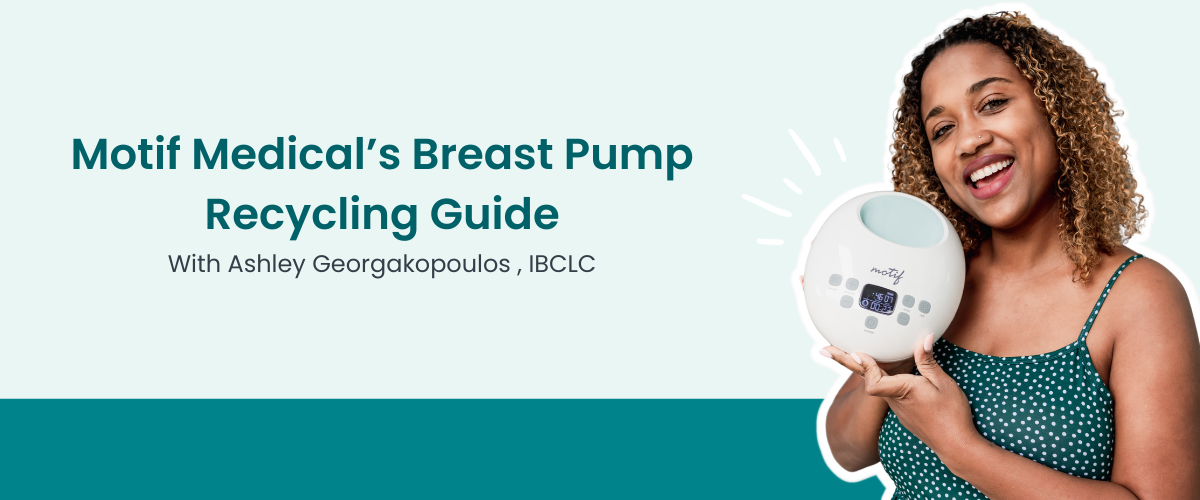Maximizing Output: Technique
Technique is always something worth exploring and improving when pumping. It feels redundant, but worth repeating: pumping is not just about suction. The best way to look at pumping is baby simulation. What does a baby do when breastfeeding?
They first stimulate the nipples with gentle and repetitive tugging. They push and knead on the breasts. Sucking and swallowing then take up the majority of the session, their tongue continuously providing stimulation to the mother. All of these steps trigger oxytocin to flow, which makes milk flow!
One very important feature? Your baby is particularly cute and adorable. Oxytocin is now through the roof. So yes, suction strength is only half the battle. How can we try to essentially copy all of the tricks a breastfeeding baby does to get the best response possible?
They first stimulate the nipples with gentle and repetitive tugging. They push and knead on the breasts. Sucking and swallowing then take up the majority of the session, their tongue continuously providing stimulation to the mother. All of these steps trigger oxytocin to flow, which makes milk flow!
One very important feature? Your baby is particularly cute and adorable. Oxytocin is now through the roof. So yes, suction strength is only half the battle. How can we try to essentially copy all of the tricks a breastfeeding baby does to get the best response possible?

Here are a few tips and tricks I’ve gathered over the years:
- Take a deep breath after assembling the pump. Relax.
- Gently massage and press the breasts.
- Use a heating pad for sessions that need a little extra help.
- Stimulate the nipples by hand for 1-2 minutes prior to pumping.
- Do not skip the letdown/massage setting once hooked up to the pump.
- Find a suction setting that is comfortable AND efficient. Not too strong. Babies do not have vacuum suction strength. Gentle and steady is typically best!
- Hands-on pumping, or compression pumping, is the next best thing, and can procure fantastic results.
- Pump AT LEAST as often as a baby would normally feed. That’s at least every 2-3 hours. Sometimes bottle feeding can stretch feedings out, but pump schedules should still mimic small, frequent feeds. This provides more adequate and authentic stimulation needed to encourage healthy supply.
- Visuals and Smells- pictures, videos, or having baby nearby when able can take your mind off pumping and get the love feelings flowing. If away from baby, it helps to also have a blanket or onesie that still smells like your baby, snuggle it close!
- Listen to classical music. No, really! Classical music has shown to be a great tactic to relaxing the body and resulting in higher milk output.
Breast Care
Taking care of your breasts includes massaging the tissue, lubricating and moisturizing nipples as needed, and being attentive and proactive to any noticeable changes or pain. Pumps work better and more effectively than they ever have, but that does not mean they pull out milk from every alveola.
Feeding directly from the breast includes more stimulation, as well as massage. To get the best results during pumping, while also protecting the tissue from clogs and poor drainage, massage before and during pumping. Heat compresses and heating pads can also be used as needed for added benefit. All of this encourages healthy blood flow to the area, softens fatty milk deposits, and directs milk flow outward. Massage should be gentle, like kneading dough and less like rubbing, not making the skin raw or sore. Almond and coconut oils, as well as breast/nipple salves, make great lubricants for this.
These lubricants can also be used on the nipples, making pumping less likely to rub and create unpleasant sensitivity or blistering. If these oils are not on hand, but lubrication is needed, try hand expressing breastmilk. The naturally occurring fats/oils, plus the antifungal properties, of your milk make it a multipurpose option!
Cooling after a pump session can calm the tissue, especially if dealing with engorgement or oversupply problems. This can be with cooling gel packs or wet washcloth.

Lifestyle and Routine
Did you know? If pumping multiple times a day, parts do not have to be washed between every use! Place the parts that connect to you, minus the tubing and pump engine, in a bag and refrigerate between use. Once finished for the day, wash and boil/sanitize. This can make things way less overwhelming, as proper sterilization may not always be attainable throughout the day.
- Tubing should not be washed. If moisture or fogging has occurred, or if tubes were washed on accident, new tubing will be needed to avoid mold growth in both the tubing and the pump engine.
- Flanges can be used as a funnel. Whether that is in a bag for storing or into the bottle for using. Motif’s bag design is designed for easy-pouring, too!
- Implement good inventory practices for storing milk: First in, first out. Labeling and storing in flat milk storage bags makes things much easier. Read here for more on milk storage and guidelines.
- Find what works for you as an individual. Speak up for what you need to make that happen! This applies for work, home, or wherever you are when you need to pump.
- Put thought and love into your routine, for there are wonderful reasons why you’re doing it. Some mothers find that creating a specific corner at home for pumping can make the task more pleasant. This can include things like a snack basket, oil diffuser, soft lights, music and earbuds, pictures of your baby, fresh flowers- whatever speaks to you and brings joy and relaxation.








